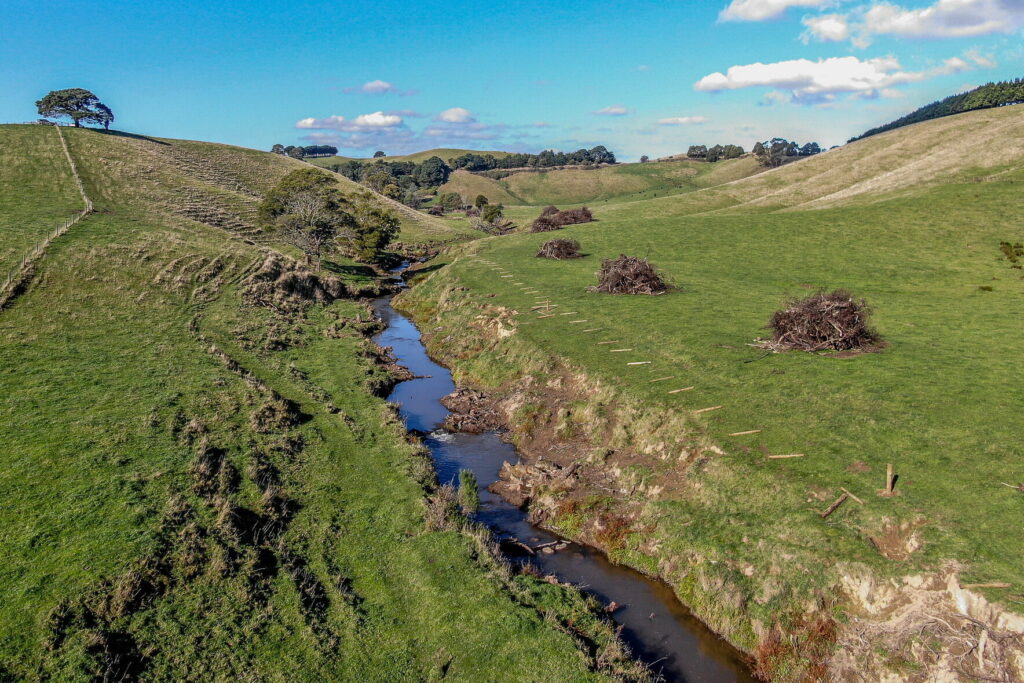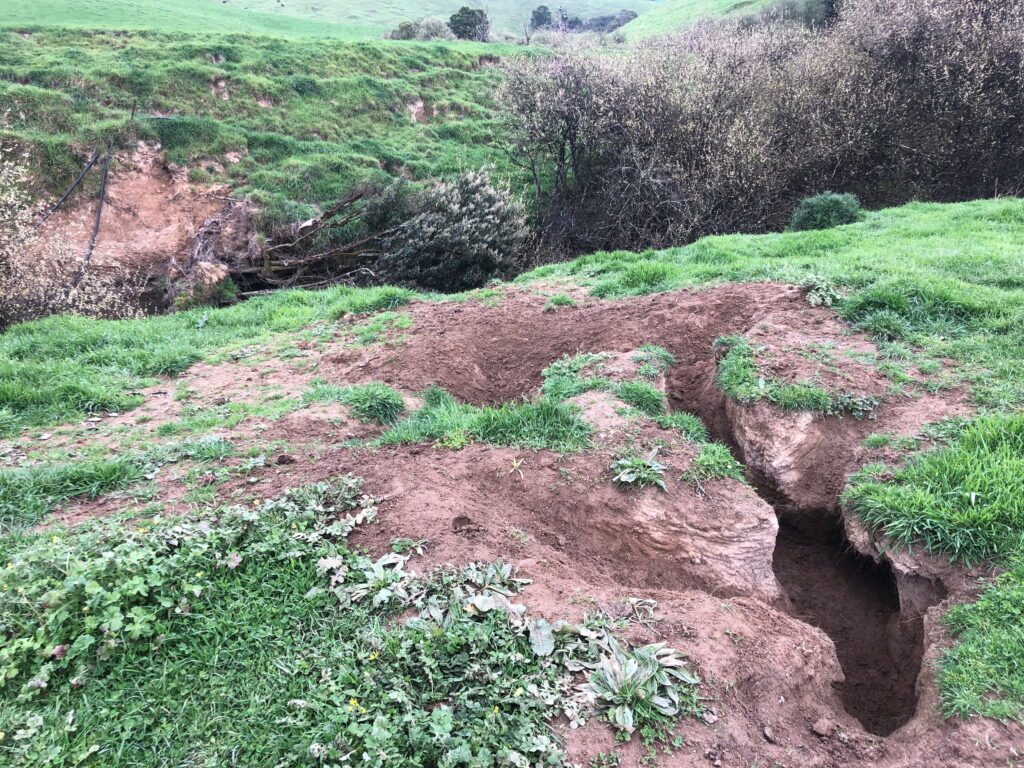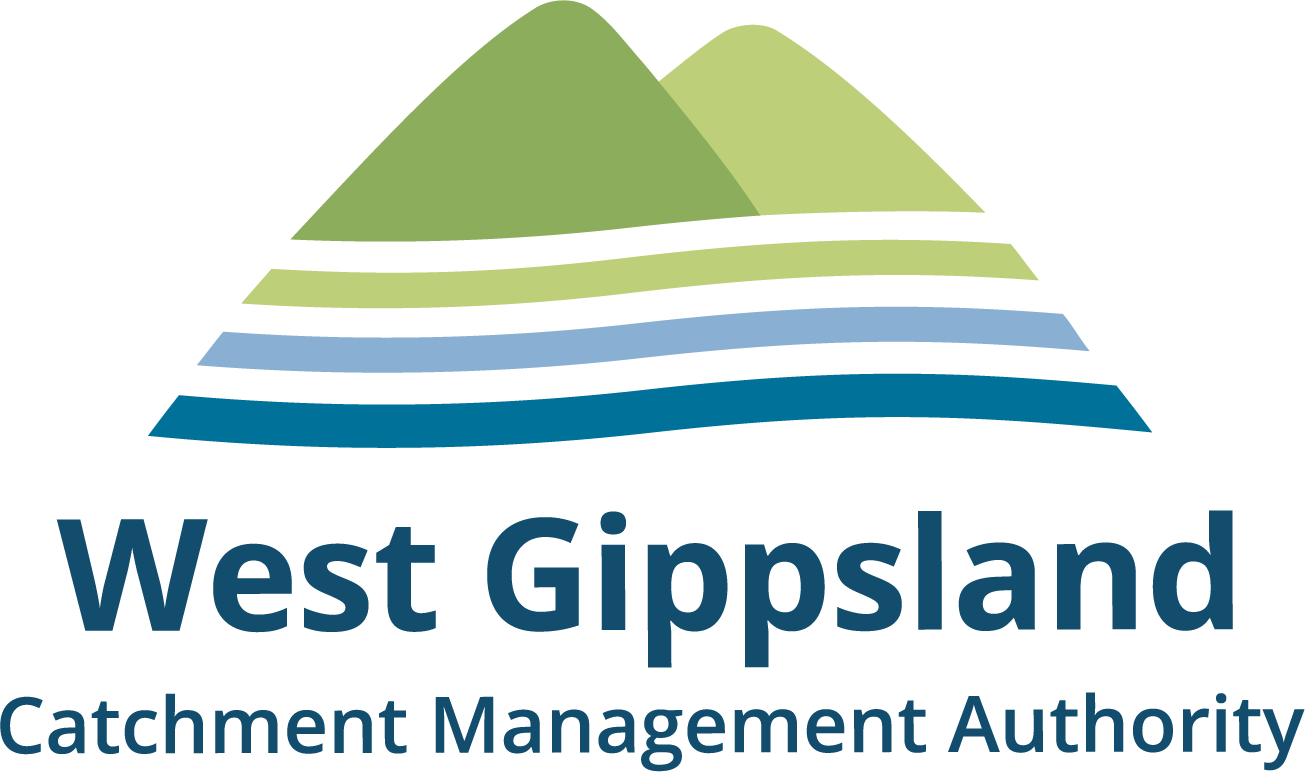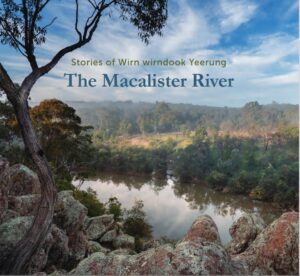A world of rivers in West Gippsland
On World Rivers Day Sunday 22 September, West Gippsland Catchment Management Authority (CMA) reflects on the importance of rivers and how we are working with Traditional Owners, partners and community to protect and enhance them.
“We love rivers and are proud to be tasked with protecting, enhancing and advocating for over 40,000 kilometres of designated waterways across the catchment of West Gippsland,” said Martin Fuller, CEO of West Gippsland CMA.
“All these waterways flow to the Victorian coast, discharging through the world renowned Gippsland Lakes, or directly into Bass Strait and the Southern Ocean.
Every river in West Gippsland is unique from the short and sharp Agnes River near Toora in South Gippsland that supports dairy farms, forest and agriculture and flows into the world recognised Corner Inlet Ramsar site to one of Victoria’s iconic rivers the Durt’Yowan (Latrobe).
Durt’Yowan, the Gunaikurnai name for the Latrobe River begins near the Baw Baw plateau, running through the Latrobe Valley and into the Gippsland Lakes. More than 260 kilometres long, it supports plants and animals of major conservation importance, and is also a freshwater source for towns, industry, power generation and agriculture.
With a focus on rivers and their catchments, the CMA works every day to improve catchment health through a range of programs and projects spanning from working towards self determination for Traditional Owners, partnering with legends like Landcare, Trust for Nature and Greening Australia and building relationships with the amazing landholders and community who are willing to work for river and catchment health.
The CMA delivers programs for rivers to remove weeds, fence and revegetate rivers, recover from floods, deliver water for the environment to bring rivers back towards their natural flows, restore wetlands and work with farmers to be at the forefront of sustainable agriculture.
This work ultimately flows on to a more healthy and resilient home for wildlife and the West Gippsland community.
In 2034-24 the CMA:
- Fenced 50 kilometres along West Gippsland’s river to protect them and prepare for planting the banks.
- Planted over 104,050 trees over 152 hectares to restore rivers and provide shade and shelter for stock and wildlife.
- Treated 993 hectares of weeds to restore biodiversity.
- Delivered 34,476 megalitres of water for the environment to restore natural flows for native fish and replenish wetlands.
“On World Rivers Day and every day, we thank everyone for supporting the work of the CMA to protect and restore West Gippsland’s rivers – the lifeblood of the region.”
Become a river lover
Find out more about the work we do and sign up to our e-news for updates.
Agnes Shorts file comp and event
If you live in the Toora, Welshpool area along the Agnes or Franklin Rivers – why not share the love for your rivers by preparing and submitting a short film in the Agnes Shorts competition?
You can also join the free event on Wednesday 30 October at Toora Hall to view the films and hear from members of the West Gippsland CMA team about the journey of river restoration and the work we do. Find out more about the competition and enter here.
World Rivers Day is a celebration of the world’s waterways. It highlights the many values of our rivers, strives to increase public awareness, and encourages the improved stewardship of all rivers around the world. Rivers in virtually every country face an array of threats, and only through our active involvement can we
ensure their health in the years ahead.

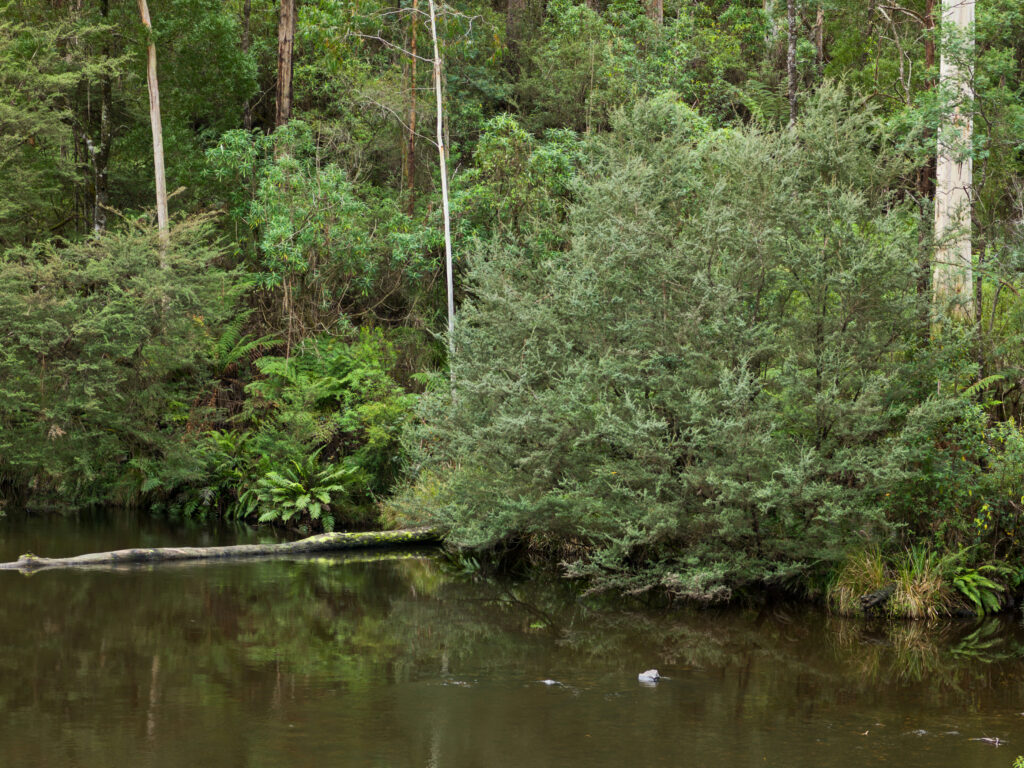
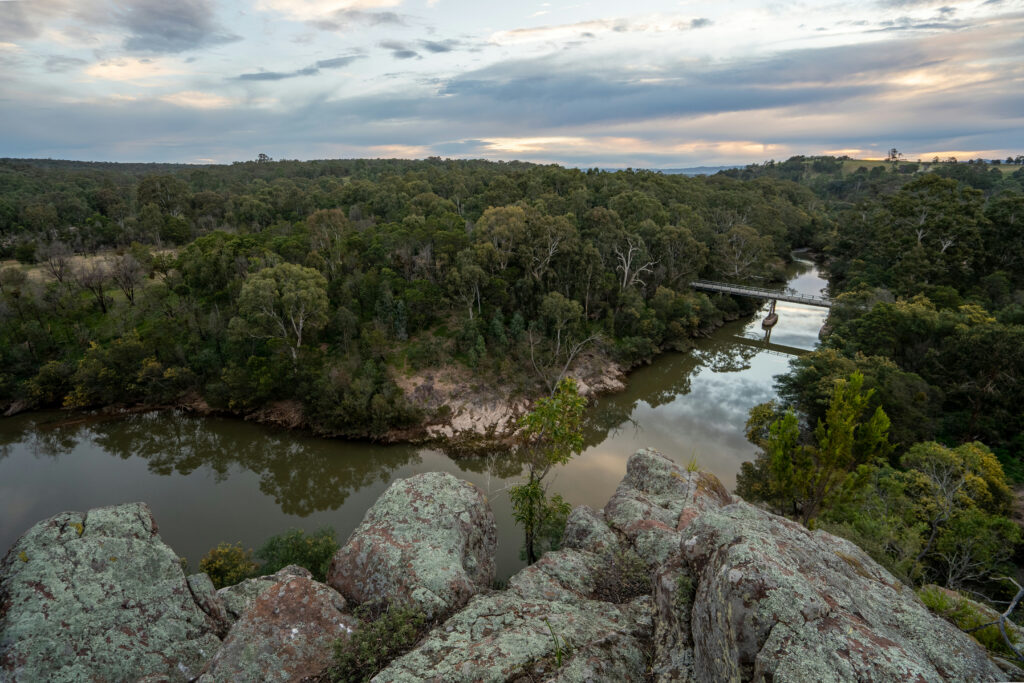
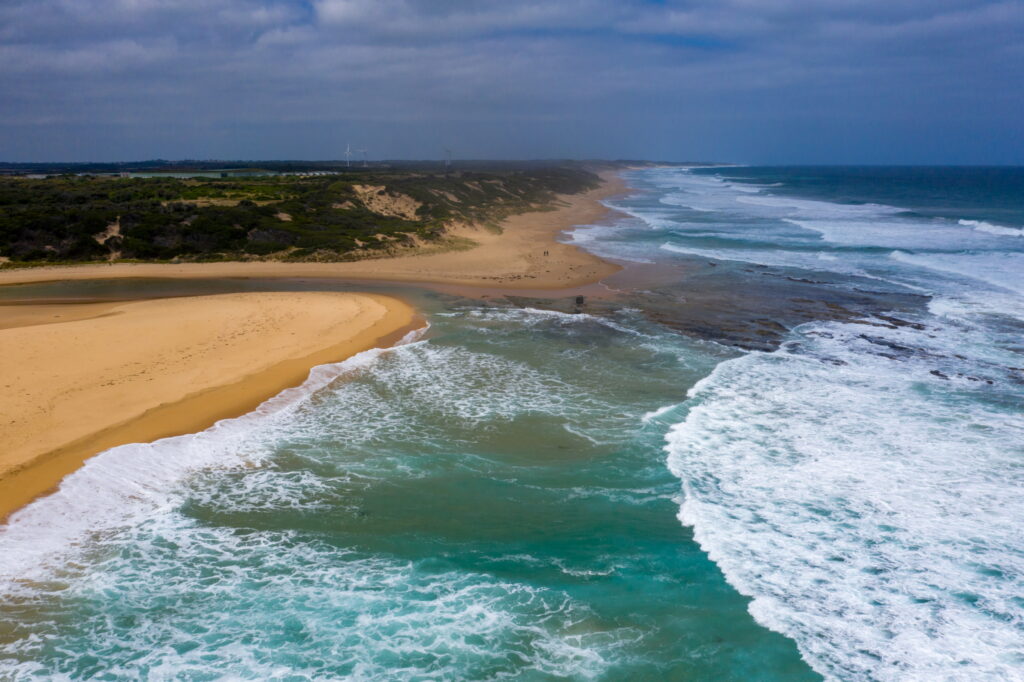
From Swamp Paperbarks to majestic River Red Gums and towering Mountain Ash, trees are the building blocks of catchments. This National Tree Day West Gippsland Catchment Management Authority (CMA) celebrates trees young and old – those in the precious patches of remnant bush we strive to protect and enhance and those planted today to play a part in our dream of restoring rivers and catchments.
“From San Remo to Sale, West Gippsland is a diverse environment with a mind boggling array of tree species and vegetation communities,” said Matt Bowler, Team Leader – Project Delivery for West Gippsland CMA.
“Every tree plays its part in healthy waterways by securing banks and making them more resilient, filtering water and providing shelter for stock and homes for wildlife.”
“Remnant patches of vegetation exist across the catchment and are those that have never been cleared. Each is precious and provides the richest habitat and a virtual ‘encyclopedia’ of the complexity of plants that grow in Gippsland.”
Matt and his team look to these remnants to inform their projects.
“They are the ‘time capsules’ and reflect what we are trying to recreate across our restoration projects that will ultimately become the ‘remnant vegetation’ of the future.”
Farmers often tell Matt that shelter belts are ‘better than hay’ out in the paddocks with cattle resting in their shelter over winter and keeping on weight and condition. Farmers are also key in supporting habitat by fencing off patches of remnant vegetation on their properties.
Along rivers, Matt and team works with landholders to create habitat to fence off riverbanks, protect vegetation and enhance the different habitats that once dominated the landscape.
Across 2023-24, Matt and his Project Delivery team put in 150,000 carefully sourced and selected plants to enhance and link wetlands and restore rivers. This number is complemented by many more planted by the amazing partners the CMA works with – including Traditional Owners, Landcare, Trust for Nature, Greening Australia and private landholders.
“Revegetated rivers become corridors for animals to move along and also find refuge in times of drought.”
“I’ve been involved with the CMA for 15 plus years, and one of the best parts of my job is driving around, seeing the patches of habitat we have helped to create doing their job, full of birds, koalas, possums and gliders.”
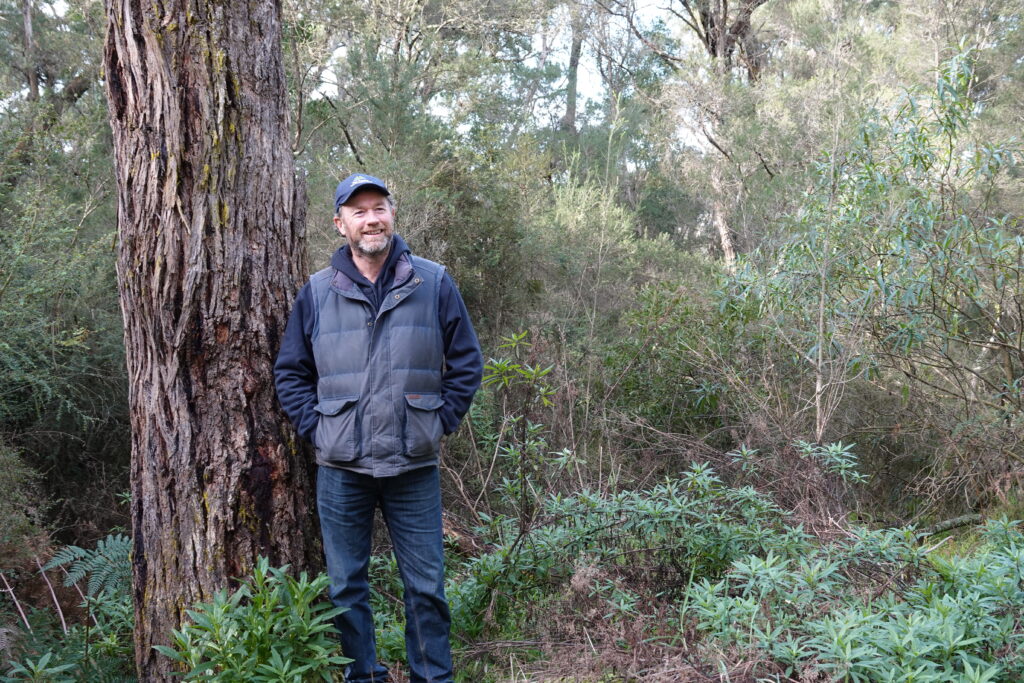
Every river has a story – or many stories
The second, updated version of “Stories of Wirn wirndook Yeerung – The Macalister River’ is a special booklet created by West Gippy CMA that captures river stories from seven people – each with a unique connection to this very important and beloved river.
Stories of Wirn wirndook Yeerung The Macalister River is a great story of how decades of work on the river by the community and government – including environmental flows, is helping to improve the Wirn wirndook (Macalister River).
How are we tracking on communication with you about Environmental Water? We would love to know!
We are asking for a few minutes of your time to complete a short online survey, to help us understand whether our communications are helping increase your knowledge of Water for the Environment, and we’re giving you all the information you need when and how is best for you.
It’s also a great chance for you to tell us how you think we should share information with you in the future.
There are two $250 local business association gift cards up for grabs for two lucky participants who complete the survey. Winners will be notified in September 2023.
So, we’d love you to complete the survey and share it with your coworkers, friends and family. All responses welcome!
Please email us at eflows@wgcma.vic.gov.au if you have any questions.
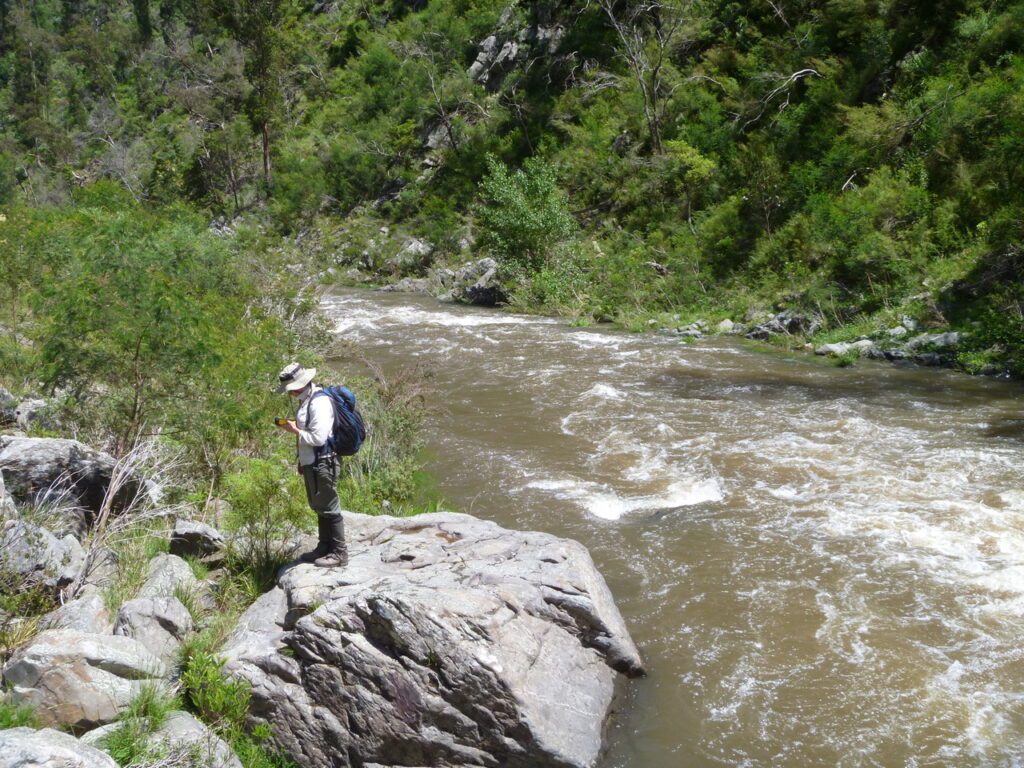
It is National Landcare Week Monday 7 – Sunday 13 August and we inspired by the incredible impact this movement has across West Gippsland.
“This year’s theme of ‘be inspired, be empowered, be a landcarer’ sits perfectly with us as we are proud to support and empower four Landcare networks across West Gippsland and their inspired members,” said West Gippsland Catchment Management Authority CEO Martin Fuller.
“There are currently 1,595 Landcare members in West Gippsland who last year contributed 18,930 volunteer on ground hours, undertook 2,297 hectares of weed control and revegetated 194 hectares to improve waterways and habitat.”
“The Landcare community does so much more than on ground works, they are at the forefront of bringing in new ways of thinking and of tackling emerging issues like climate change.”
Landcarers are working across projects in a wide range of roles across the region – so we put on our boots to meet some and hear their stories.
Jillian Staton is South Gippsland Landcare Network Board Chairperson and on the Board of Tarwin Landcare Group being involved in Landcare for over 10 years.
“Being a Landcarer gives you the tools, motivation and opportunities to actually do something in your own backyard. It’s a great antidote to all the negative publicity we receive every day about the state of our planet. ”
“I get a huge buzz when we organise an event or a project that attracts a lot of participants and seeing and hearing the ‘lightbulb moments’ – when people are spurred into taking action. Also, interacting with our staff. I love their ideas and passion.”
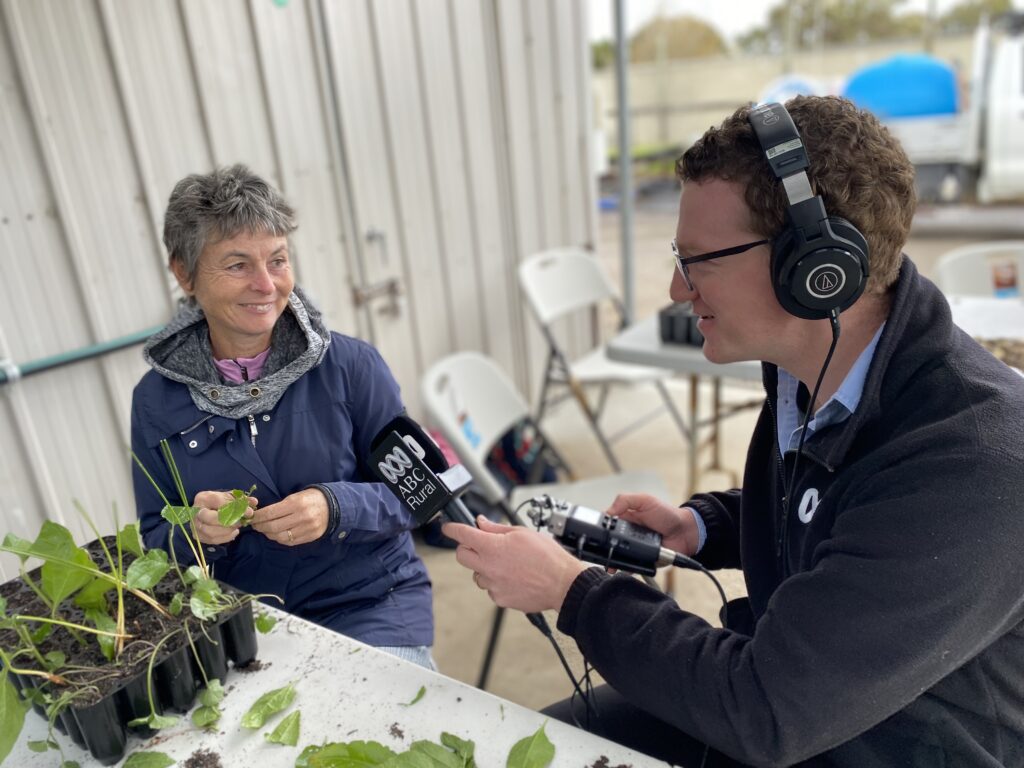
Lisa Wangman spent 20 years as a staff member at Bass Coast Landcare Network before becoming a volunteer two years ago. She is the Education, Training and Communications Manager and facilitates for Phillip Island Landcare Group.
“I always wanted to get involved with Landcare as there is so much that can be done on private land to restore environments while still boosting productivity, and I wanted to help encourage more landholders and community members to get involved.”
“The social connection is a huge benefit and being able to make a difference in people’s lives by increasing their skills and social network while restoring the local landscapes is very rewarding.”
“I love the connections I get to make with people on ground in Landcare, the grass roots nature of working to help with what people want and need upwards, instead of top-down imposed management. This way we can make real and lasting change that is not only adopted by communities but owned, embraced, and shared by them, that then encourages more people to get involved.”
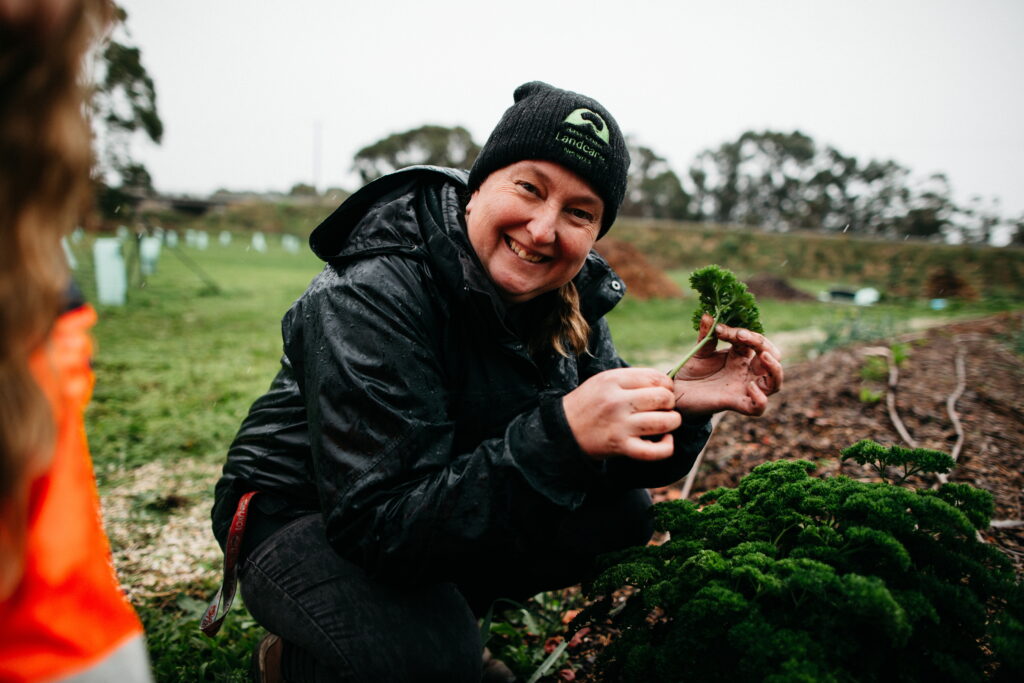
Brian Burleigh has volunteered with Cowwarr Landcare Group for 15 years.
“Landcare is important to me because it promotes the native environment and eliminates idle time,” said Brian.
His favourite project so far has been revegetation works at Swing Bridge Reserve and he believes leading by example is the best way to encourage others to join Landcare.”
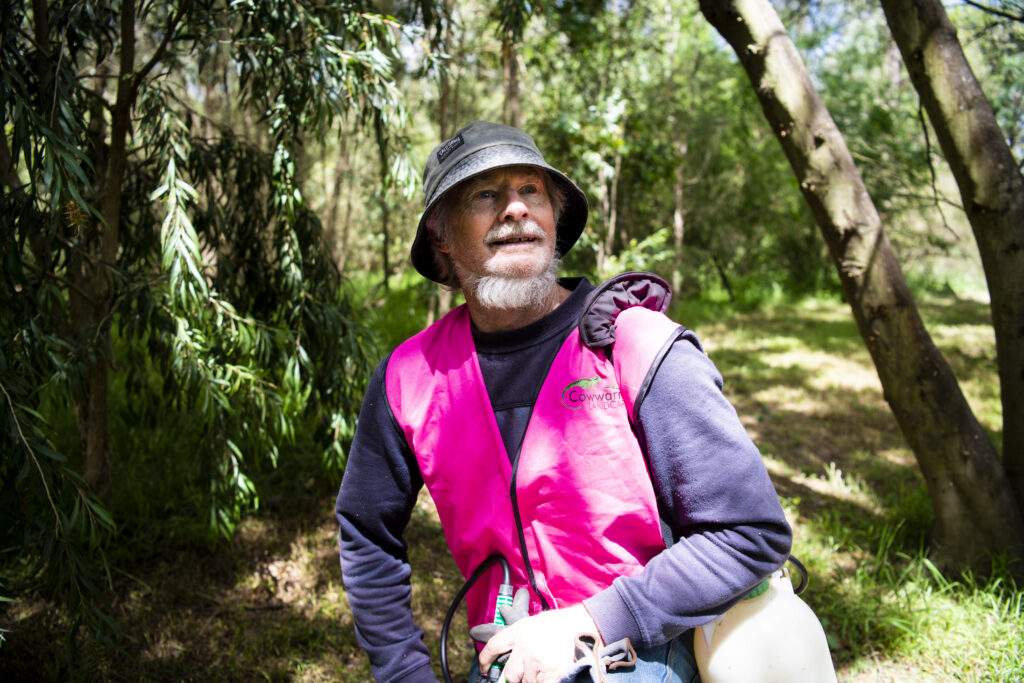
Beth Ripper from Avon Landcare and Lakes Entrance Community Landcare first heard about Landcare when she participated in a local leadership program at Strathfield in the mid-nineties.
“The program was focused on protecting the endangered Gippsland Plains Grassy Woodlands and we helped put together a submission for funding a project on the Blackall Creek on the Western edge of Stratford – we called it Blackall Dreaming. This became a project of the Avon Landcare Group.”
“I’m now President of Avon Landcare and Lakes Entrance Community Landcare groups and a board member of the Maffra and Districts Landcare Network and Eastern Gippsland director on the Board of Landcare Victoria Inc. I am one of three Victorian Reps on the National Landcare Network Members Council.”
“Landcare is important to me because it is a community driven organisation that is full of people with amazing knowledge and skills. It provides opportunities for ordinary people to be active in their local communities, particularly in local action to help reverse the impacts climate change. Being outside and working with others is an undervalued health benefit.”
“The best thing about being involved with Landcare is seeing the impact of our work over time. Turning Blackall Creek from a weed infested and eroded steam into a fabulous community and environmental asset is a real highlight. Landscape wide change is awe inspiring!”
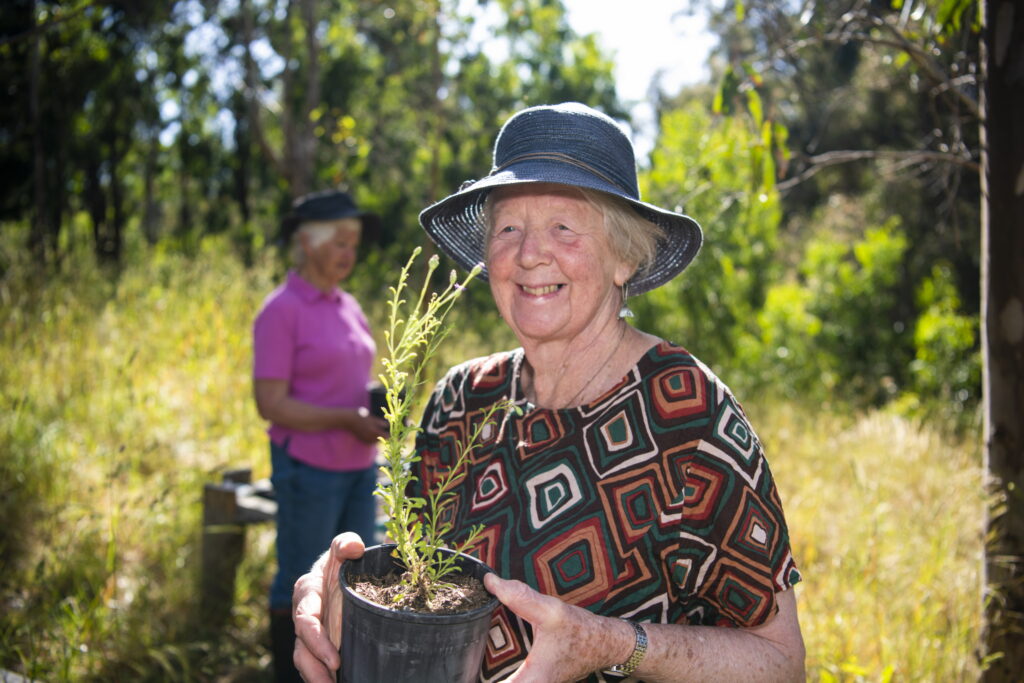
Landcare Week is an annual celebration of Landcare to acknowledge the Australians who are actively restoring enhancing and protecting the natural environment in their community.
Trees essential for catchment health
On the eve of National Tree Day 2023 this Sunday, West Gippsland Catchment Management Authority (CMA) is reflecting on the sheer beauty of trees, and also, how many the team is planting in the catchment over the year.
“Planting trees along waterways is one of our favourite stages in any project,” said CEO of West Gippsland CMA, Martin Fuller.
“This stage usually symbolises that the ‘heavy lifting’ of weed removal and fencing are complete and we can get going on putting plants in the ground so they can work their magic.”
This “magic” includes stabilising banks, creating habitat for wildlife and helping the waterway become more stable and resilient to the impacts of flood events and drought.
It’s tree day every day for West Gippsland CMA and across the catchment this year, the team will put over 100,000 trees and plants into the ground – the finishing touch to restoration projects along rivers and waterways from San Remo to Sale.
Matt Bowler, Team Leader – Project Delivery for West Gippsland CMA estimates that this number is complemented by many more planted by the amazing partners the CMA works with – including Traditional Owners, Landcare, Trust for Nature, Greening Australia and private landholders.
Matt has witnessed change on a landscape scale – the result of projects he has overseen and been directly involved in. He simply loves trees and takes pride that, in his over 15 year career with the CMA, has personally planted many thousands and seen saplings grow to enormous, established trees.
“Gippsland is a great place to plant trees, the small sapling you plant this year can have a Koala feeding in it in only five years’ time and be creating shade, shelter and habitat for many other animals.” “Some of the largest trees in the world can still be found high up in the Strzelecki Ranges – remnant stands of Mountain Ash (Eucalyptus regnans) – which are the largest flowering plant and hardwood species on earth.”
“The cool thing is you can plant one today and it will still be alive in hundreds of years’ time”
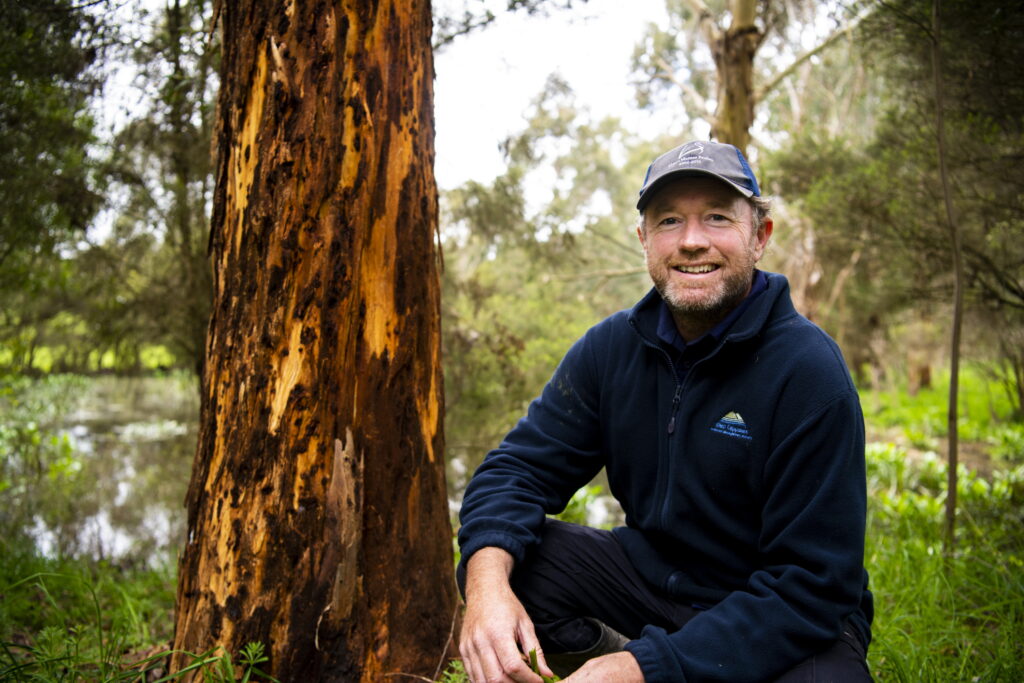
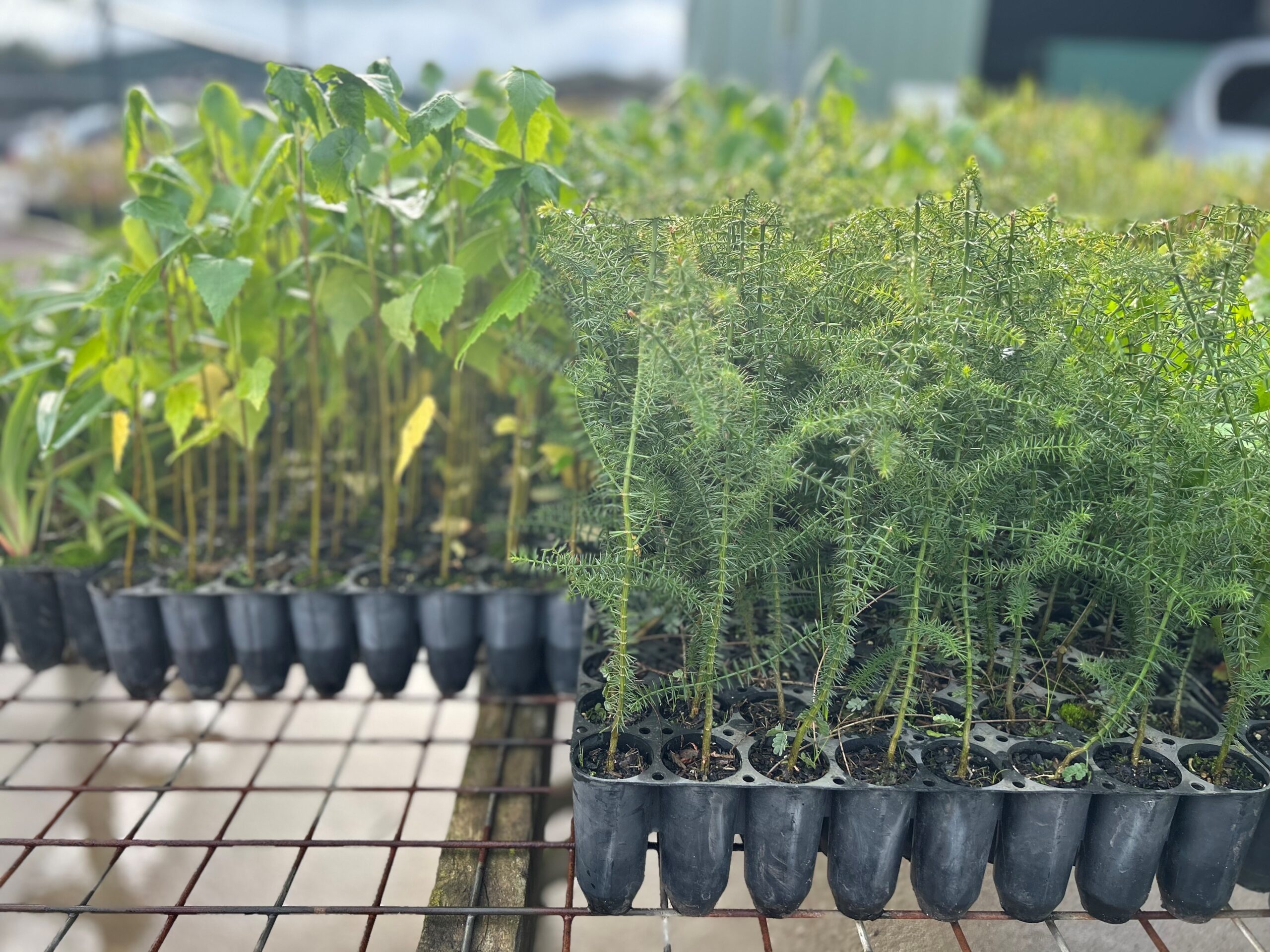
Funding of up to $20,000 is now available to improve irrigation efficiency on farms across central Gippsland with all farmers encouraged to apply.
The grants, provided by the Victorian Government’s Sustainable Irrigation Program, are available for:
- Re-use systems to capture water running off flood irrigated bays that would have previously left the property. The maximum size is 1 ML for every 10 ha of catchment. Incentives of $400/ha (excl. GST) can assist with the cost of constructing your re-use including permits, earthworks, materials, power installation and a permanent pump and motor including shed/concrete.
- Best practice surface irrigation to provide consistent and stable flow rates and now includes river and groundwater diverters. The incentive of $200/ha (excl. GST) can assist with reconfiguring irrigation layout, upgrades to existing re-use systems, farm channels and bay outlets to improve flow rates and automation infrastructure (e.g., timers).
- Pressurised (spray) irrigation conversion from flood irrigation to pressurised irrigation as a way of saving water on more permeable soil types. The $600/ha incentive (excl. GST) can assist with the cost of the supply and installation of the pressurised system such as permits, materials, and electricity connection.
Denison Dairy Farmer Mat Warren milks 2,000 cows at two family operated dairies and is a previous incentive recipient. “We put our hand up for flood spray conversion. The difference it makes is the labour saving and time. I can have ten pivots running at night and be in bed sleeping – it’s just made the job a lot easier.
“There are real benefits to gain from these incentives and recent changes also value add,” said Brad Missen, Sustainable Agriculture project Officer for West Gippsland CMA.
“They include water, time, labour and cost savings along with wins for the environment such as reducing nutrient loss and groundwater infiltration.”
“We know all farmers are extremely busy and I just encourage you to give is a call and we can help you to maximise the great opportunities available through this program.”
If you are interested in being involved, please contact Brad Missen from the West Gippsland CMA on 0472 501 223 or bradm@wgcma.vic.gov.au or Irrigation Extension Officer Caelan McIntosh on 0476 885 716 or caelan.mcintosh@agriculture.vic.gov.au
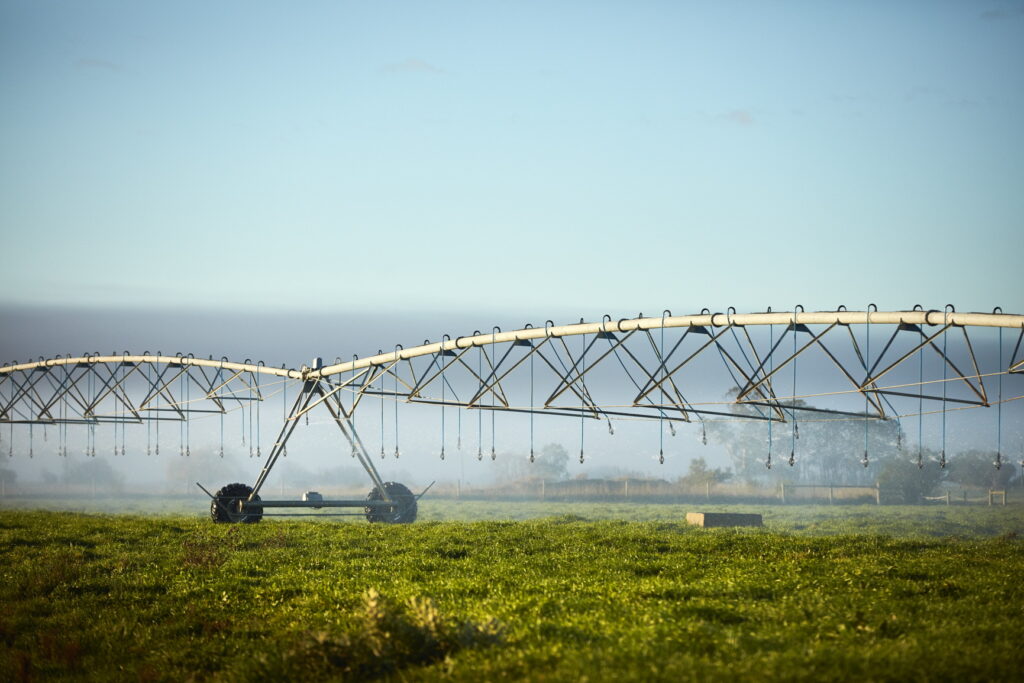
In this pod from 2021, Gerard speaks with the Manager of the Registered Aboriginal Party (RAP) with the Gunaikurnai Land and Waters Aboriginal Co-operative (GLaWAC), Uncle Russell Mullett.
An Elder, Uncle Russell speaks about the development of Native Title in Gippsland and both the impact and the challenges Traditional Ownership present.
It’s a fascinating discussion which we hope you enjoy.
About the podcast
Gippslandscapes is an occasional podcast, highlighting the many people doing great things caring for the environment and improving the landscapes of our region. Whether they are farmers, “townies” involved in Landcare, or just someone with a passion to make the region a better place.
Each episode will feature one person or group and they are available wherever you get your podcasts. All episodes are archived on Zen-cast and Apple Podcasts.
If you’d like to provide feedback to the Gippslandscapes team you can drop them an email at here or post a review on iTunes.
Last willow gone from the Agnes River
West Gippsland Catchment Management Authority (CMA) is proud to have removed the last remaining stand of willow trees from the entire length of the Agnes River – a first for the organisation and a win for the environment.
“Willows are a problem for rivers and removing them from 100% of the Agnes is a special milestone for the CMA,” said CEO Martin Fuller.
“The Agnes is a flagship river for our region because it runs into Corner Inlet and what happens along its length has a flow on effect for the world renowned wetland.”
West Gippsland CMA has recently celebrated 25 years and the team has been chipping away at removing willows across the catchment since it was established in 1997.
Someone who has been on the ground since this project began is Project Delivery Officer, Richard (Richie) Allen who has worked with the CMA for over 20 years. He forms partnerships with landholders to map out the works required and then creates an agreement to implement them.
“In the early days there was a different mindset, so we chipped in and just did what we could. As a few landholders came on board, the success spread like wildfire. Now people are queuing up to have works done because they see the benefits like how it’s much easier to manage their stock,” said Richie.
“Willows are introduced, impacting on waterways by diverting the water flow, changing the channel, making the river wider, and have a massive leaf drop in one hit – which changes nutrients in the water.”
The next step after removing willows and weeds is planting the riverbanks with native vegetation. The team will soon put thousands of indigenous species in the ground using a mix of 30% eucalypts and the remaining understorey plants. This links habitat which benefits the river health and wildlife.
“So far, we have fenced and revegetated over 90% of the river. By the end of 2023-24, this will be 100% and I can see how the river is ‘reclaiming’ itself and wildlife is starting to return,” he said.
To date, works on the Corner Inlet and Agnes River project, funded by the Victorian Government as one of its Flagship Rivers have also included:
- fencing 78.5 kilometres of river frontage at 65 sites
- planting 235,838 trees and shrubs to restore 237.63 hectares
- undertaking weed control on 414,51 hectares at 218 sites.
All the positive works along the Agnes upstream ultimately flow down to benefit fish, birds and seagrass in Corner Inlet. The buffer created by the weed removal, fencing and revegetation improves conditions for seagrass to flourish by reducing nutrient and sediment flowing into the inlet.
Agnes River is on Gunaikurnai Country and begins in the Strzelecki Ranges, meandering its way into Corner Inlet near the town of Toora. It is well known for the Agnes Falls where the river cascades into a spectacular 59m drop into a deep picturesque gorge.
This large-scale restoration project is one of 19 Flagship Waterway projects funded as part of the Victorian Government’s $248 million investment over four years (2020-2024) to improve the health of waterways and catchments across regional Victoria.
